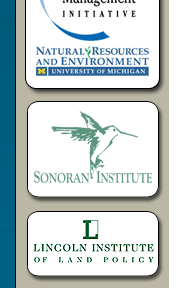


|
Best Practices for Collaborative Planning on State Trust Lands The research team developed a set of Best Practices based on input from participants who were interviewed and on the research team’s cross-case analysis of the eight cases. These best practices provide guidance to state trust land managers and other stakeholders interested in creating, guiding or participating in a collaborative planning process. The best practices describe effective ways to decide when to collaborate, to set up a successful process, to determine who will participate, to organizing a successful process, to create a decision-making structure, to help participants work together, to deal with information and to implement agreements. Some of the best practices include: |
|
||||||||||||||||
|
|||||||||||||||||


